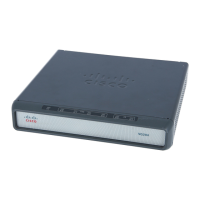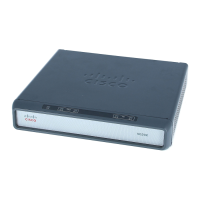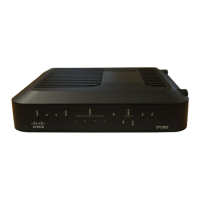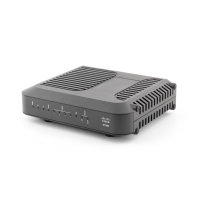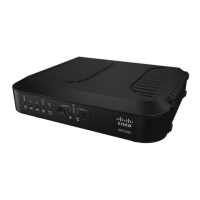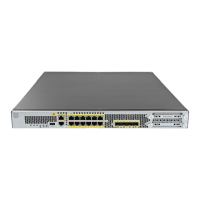Configuring ISG Subscriber Services
How to Configure ISG Services on the Router
9
DETAILED STEPS
Configuring an ISG Service Policy Map with a Traffic Policy
ISG services are configured by creating service policy maps on the ISG or service profiles on an external
AAA server. Perform this task to configure a traffic policy in a service policy map on the ISG.
Note Some of the commands that can be configured in a service policy map require other configuration in
order to work properly. Details on how to configure specific ISG features and functionality are provided
in other modules in the Cisco IOS Intelligent Services Gateway Configuration Guide.
SUMMARY STEPS
1. enable
2. configure terminal
3. policy-map type service policy-map-name
Command or Action Purpose
Step 1
enable
Example:
Router> enable
Enables privileged EXEC mode.
• Enter your password if prompted.
Step 2
configure terminal
Example:
Router# configure terminal
Enters global configuration mode.
Step 3
class-map type traffic match-any class-map-name
Example:
Router(config)# class-map type traffic
match-any class1
Creates or modifies a traffic class map, which is used for
matching packets to a specified ISG traffic class.
Step 4
match access-group input {access-list-number |
name access-list-name}
Example:
Router(config-traffic-classmap)# match
access-group input 101
(Optional) Configures the match criteria for an input class
map on the basis of the specified ACL.
• Skip this step if you want to define a traffic policy that
applies to all session traffic rather than to a specific
traffic flow.
Step 5
match access-group output {access-list-number |
name access-list-name}
Example:
Router(config-traffic-classmap)# match
access-group output 102
(Optional) Configures the match criteria for an output class
map on the basis of the specified ACL.
• Skip this step if you want to define a traffic policy that
applies to all session traffic rather than to a specific
traffic flow.
Step 6
exit
Example:
Router(config-traffic-classmap)# exit
Returns to global configuration mode.

